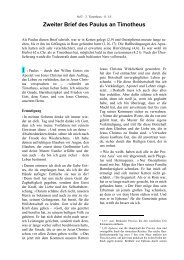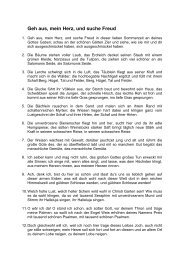Create successful ePaper yourself
Turn your PDF publications into a flip-book with our unique Google optimized e-Paper software.
Foetal circulatory system.<br />
Neonatal circulatory system.<br />
Arch of the aorta<br />
Ductus arteriosus<br />
Lung<br />
Left atrium<br />
Left ventricle<br />
Bodily capillaries<br />
Placenta<br />
Umbilical blood vessels<br />
Liver<br />
Right ventricle<br />
Foramen ovale<br />
Right atrium<br />
Closed ductus arteriosus<br />
Closed foramen ovale<br />
There are essential differences between the blood circulation<br />
of a foetus (above left), and that of a newborn<br />
(neonatal) baby (above right). Before birth the lungs of<br />
the foetus are unventilated, so the blood has to bypass<br />
the lungs. A major portion of the blood passes directly<br />
from the right atrium to the left through the foramen<br />
ovale, a hole in the atrial wall, thus bypassing the pulmonary<br />
circuit. That portion of the blood which flows<br />
through the right ventricle is passed from the pulmonary<br />
artery to the aorta via the ductus arteriosus,<br />
another bypass, and thus also avoids the pulmonary circuit.<br />
Before birth, the vital interchange of gases takes<br />
place in the placenta. The two umbilical arteries carry<br />
oxygen-depleted blood to the placenta, and oxygenated<br />
blood flows back to the foetus via the umbilical vein.<br />
After birth the lungs expand, giving rise to the pulmonary<br />
circuit because of the strongly increased flow of<br />
blood. At the same time the foramen ovale and the ductus<br />
arteriosus are closed, thus establishing the proper<br />
cycle of blood circulation.<br />
53
















